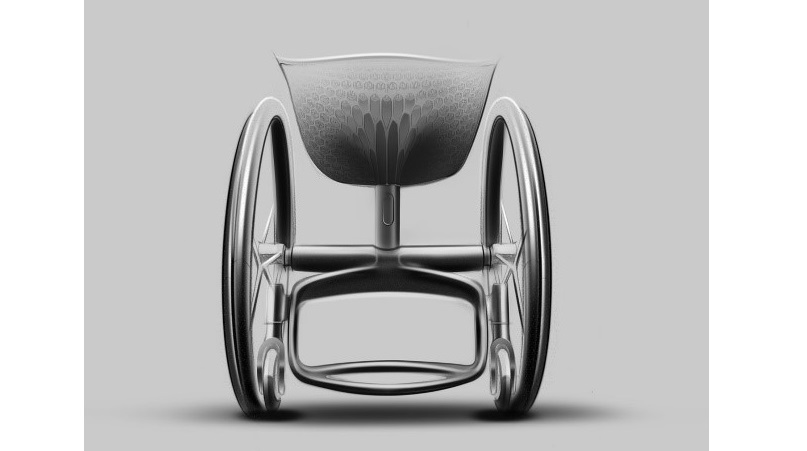
Image credit: Layer
One of 3D printing’s greatest strengths is the ability to customize individual units to individual users. In the case of medical devices, this isn’t just a matter of convenience: it also improves quality of life. London-based designer Benjamin Hubert designed a 3D printed wheelchair that can be fitted to each user individually.
Hubert’s design company Layer worked with additive manufacturing company Materialise to create the Go wheelchair for the 2016 Clerkenwell Design Week.
It took six months for designers, working with wheelchair users and doctors, to settle on a design that improved on the standard for wheelchairs. The seat and footrest can both be customized using body-mapping, which takes into account the person’s height, weight, and other body measurements as well as their disability. Users will also be able to choose additional features, colors, and accessories on a companion app. Interestingly, the seat doesn’t actually have a back – the low back rest is also customizable, and makes the wheelchair relatively light and easy to move around in.
The design is also intended to lower the risk of injury and reduce strain on joints. The frame is made of titanium, which also reduces weight and gives it a modern, organically grown look. The seat itself is made of a thermoplastic polyurethane plastic, which acts as a shock-absorbing material between the user and the frame, and a semi-transparent resin finish. The spokes of the wheels are made of carbon fiber.
Layer has worked with companies including BMW, Nike, Samsung, and Panasonic. The Go wheelchair is the first project that has been created by LayerLAB, Layer’s new in-house research division.
Filed Under: Industrial automation




